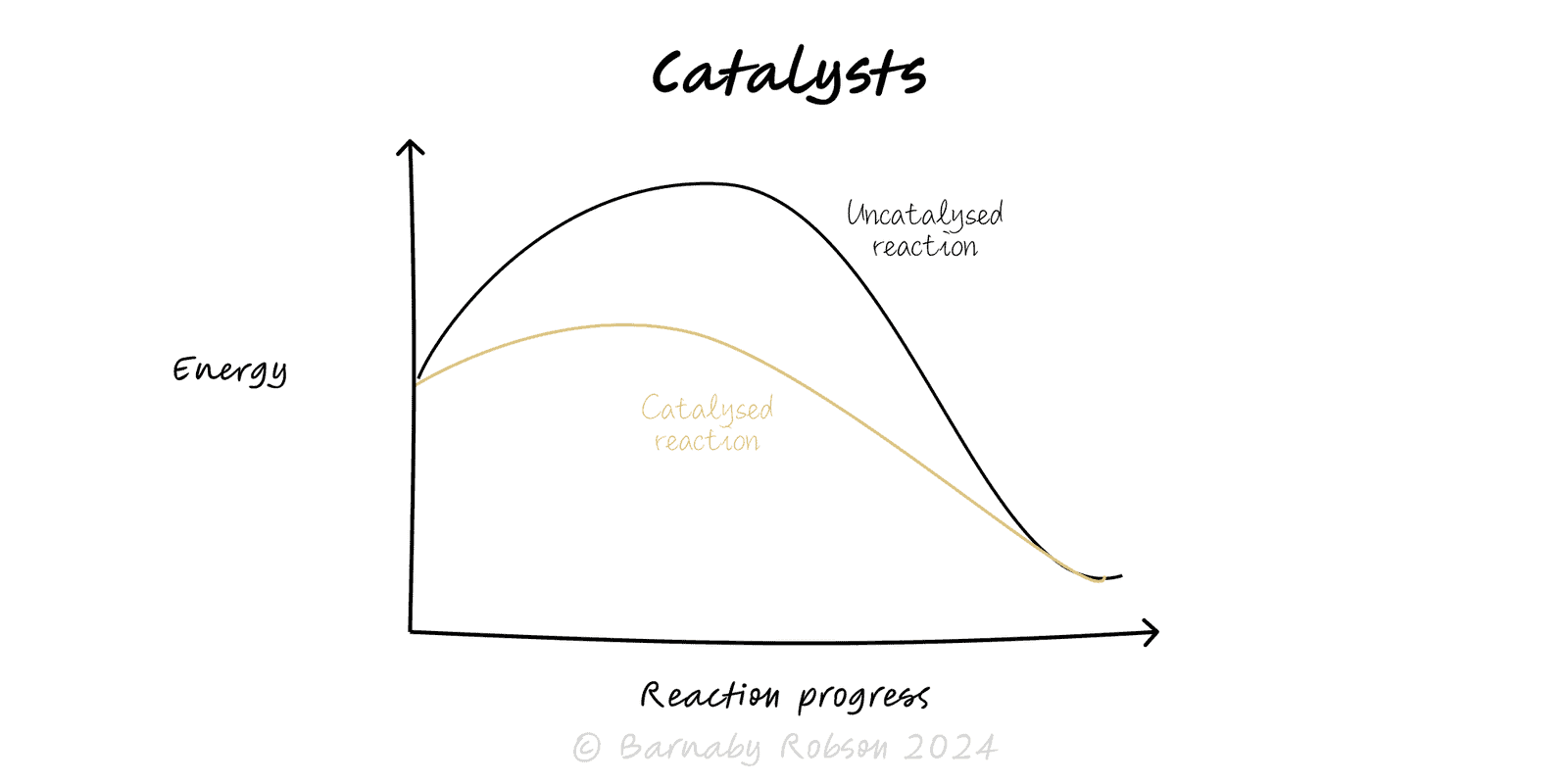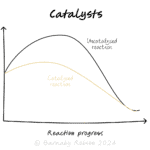Catalysts
General usage; metaphor from chemistry (reaction-rate catalysts) applied to strategy, growth and finance

In chemistry a catalyst speeds a reaction by lowering its activation energy and isn’t consumed. Strategically, catalysts are events or levers that make adoption, revenue or valuation move faster—a standards win, a key partnership, new regulation, a press moment, or a platform change. Catalysts don’t replace fundamentals; they unlock them by easing a rate-limiting step.
Rate-limiting step – every system has a slowest stage; catalysts target this choke point.
Lower activation energy – reduce effort, risk or uncertainty so the next action becomes easy.
Raise reaction energy – add impetus: urgency, attention, incentives, or distribution.
Right substrate – catalysts work only if the underlying offer and timing are ready.
Stacked effects – multiple small catalysts (e.g., certification + integration + PR) often beat one big push.
Positive vs negative – some events catalyse decline (breach, policy change); manage exposure.
Product/GTM – app-store feature, SOC-2/ISO certification removing enterprise blockers, a native integration that opens a channel, pricing/promo windows.
Growth loops – referral incentives, creator partnerships, bundles, “works-with-X” badges.
Market strategy – regulatory shifts that mandate adoption, standards wins, ecosystem partnerships.
Finance & exits – earnings beats, guidance changes, pilot wins, large contracts, clinical readouts, approval decisions (classic stock “catalysts”).
Org change – leadership reset, incentive redesign, a deadline with clear stakes.
Define the reaction – the metric you want to move fast (activation rate, LTV, ACV, MAUs, valuation).
Find the rate-limiting step – where deals or users stall (trust, distribution, procurement, compliance, switching cost).
Choose catalyst types – certification, integration, partnership, subsidy/promo, PR moment, product change, regulation, timing/seasonality.
Design the catalyst – make it concrete (e.g., “AWS Marketplace listing + co-sell”), set a date, and plan amplification (email, partners, sales plays).
Stack and stage – line up 2–3 complementary catalysts over a quarter to compound effect.
Instrument – pre/post measures, cohort splits, leading indicators (pipeline, trials, time-to-close).
Absorb the surge – remove bottlenecks (support, onboarding, stock) so the spike converts to retained value.
Confusing catalyst with cause – spikes without fundamentals don’t last.
Wrong substrate – poor product–market fit means the spark fizzles.
One-and-done – attention fades; plan follow-ups that convert into retention and referrals.
Capacity choke – surge reveals bottlenecks; prepare buffers and playbooks.
Perverse incentives – promos that attract the wrong customers or train discount expectations.
Regulatory & reputation risk – forced attention can be negative; scenario-plan both directions.
